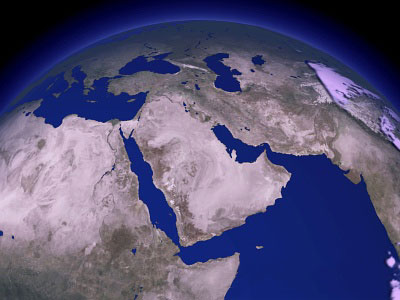Author: Marc Lynch
Affiliation: The Elliott School of International Affairs at George Washington University
Organization/Publisher: Foreign Affairs
Date/Place: March/April 2022/USA
Type of Literature: Analysis
Word Count: 3900
Link: https://www.foreignaffairs.com/articles/africa/2022-02-22/end-middle-east
Keywords: Middle East, US Map, Legacies of Colonialism
Brief:
The “Arab world”, broadly defined as the member states of the Arab League (except in the case of geographical outliers Comoros, Somalia, and Mauritania) plus Iran, Turkey, and Israel, has been considered the “Middle East” by the Washington D.C. elite from the early years of the Cold War. Many people think these parameters are natural given the geographic continuity and common understandings of regions in the twentieth century. This version of the Middle East is what American university departments, think tanks, and the State Department of the United States perceive. However, such a narrow mental map is becoming increasingly obsolete. As leading regional powers operate in much the same way outside the traditional Middle East as they do inside it, many of the region’s rivalries now exist beyond those imagined borders. The Pentagon has long known this: up until the US’ creation of its Africa Command in 2007, the region covered by US Central Command (the military command in charge of the Middle East), included not only Egypt, Iran, Iraq, and the Gulf states but also Afghanistan, Djibouti, Eritrea, Ethiopia, Kenya, Pakistan, Somalia, and Sudan—a grouping that ran counter to the State Department’s “Middle East.” As firm as it appears now, the American conception of the Middle East has little precedent in premodern history. The Ottoman Empire, a multinational empire, formerly included the Arab territories of North Africa and the Levant. Coastal communities in the Gulf were inextricably tied to the Horn of Africa across the Red Sea. Islamic networks linked Egypt and the rest of North Africa to sites deep in Sub-Saharan Africa. But instead of going back that far, the US borrowed its region picture from a more recent source: late-19th and early-20th century European colonialism and great-power politics. By sticking to an out-of-date view of the Middle East, Washington risks misreading the conduct and interests of the region’s major players, misinterpreting the actions of other global powers such as China, and exaggerating the consequences of an American retreat. Thinking beyond the Middle East will be difficult because of accumulated expertise, deeply entrenched cognitive patterns, and established bureaucratic structures. Changing global power dynamics and regional practices, on the other hand, are pushing some leading Middle Eastern states to quickly reorient, and the map they are following is no longer Washington’s—it is their own. Washington now has the task of learning how to read it.
By: Jemal Muhamed, CIGA Research Associate




